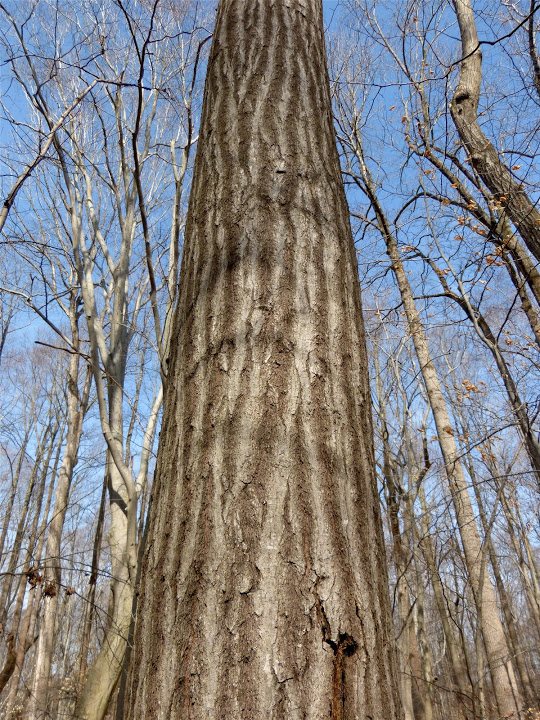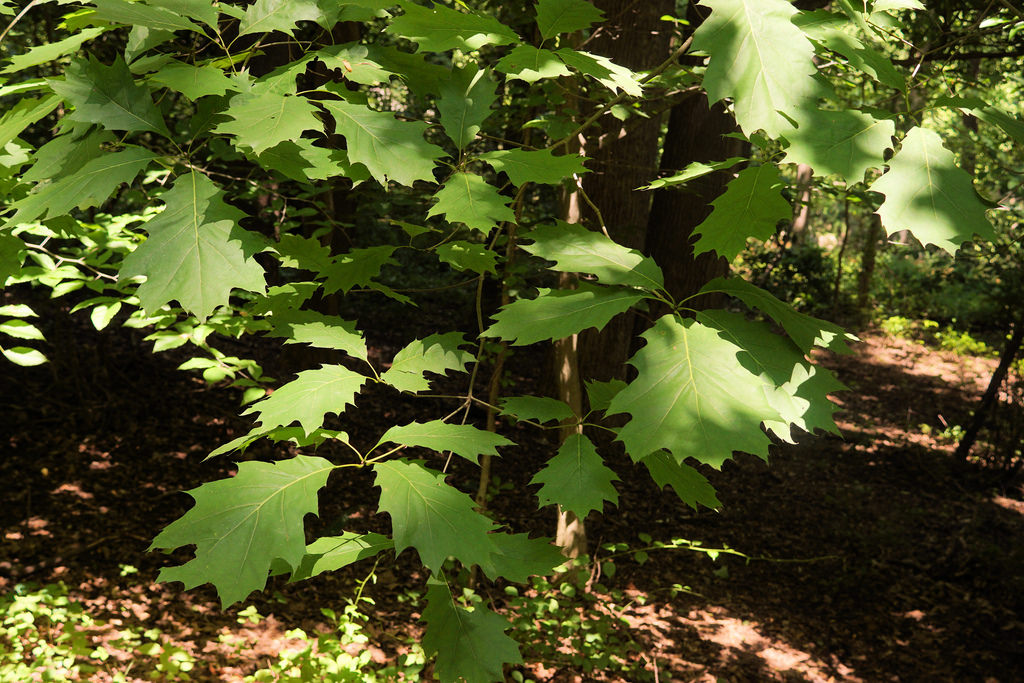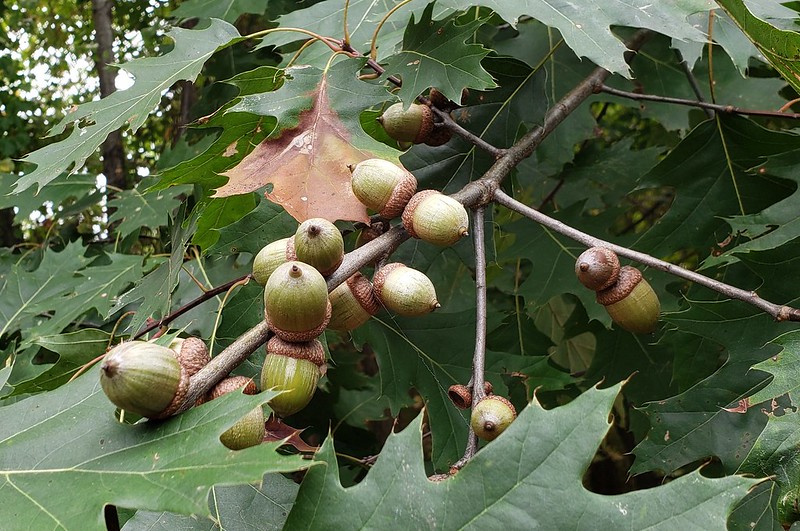Northern Red Oak
Quercus rubra L.
Description
Northern red oak (beech family, Fagaceae) reaches heights of 100 feet and diameters of 36 inches on good sites¹. When mature, the dark gray bark forms flat-topped. smooth ridges. Leaves are 5 to 10 inches long and 5 to 8 inches wide. They are dark green above, paler beneath, pinnately lobed with 7 to 10 bristle tipped lobes and sinuses reaching halfway to the midrib4,8. Sun-grown leaves have reddish petioles8. In the fall the leaves turn scarlet red7. Northern red oak is monoecious with separate male and female flowers on the same tree. Male flowers are catkins, 4-5 inches long and develop on the previous year’s growth4,6. Female flowers are inconspicuous4 and develop on the current year’s growth4,6. The one-inch acorns have a shallow flat top and take two seasons to mature.

Bark of northern red oak. @ J. Brighton 2013. Maryland Plant Atlas²

Leaves of northern red oak. @ B. Harms 2017. Maryland plant Atlas²

Acorns of northern red oak. @ M. Beziat, Maryland plant Atlas²
Distribution
Northern red oak occurs from Nova Scotia, across southern Canada to Wisconsin, south to Arkansas and northeast to Virginia¹. It grows best on upland, sell-drained soils. In Maryland it is most frequent in the western mountains but is found throughout the state².

Native distribution of northern red oak. USDA¹
Wildlife Importance
Northern red oak acorns are eaten by deer, turkey, mice, black bear and other animals1,7. Woodpeckers and blue jays eat the acorns4. The leaves are food for numerous butterfly larvae such as Banded Hairstreak and Horace’s Duskeywing4.
Economic Importance
Wood of northern red oak is valued because it is hard and close grained. It is used in cabinetry, flooring, furniture, and veneer4. Northern red oak is widely used in landscaping because of its brilliant fall color and rapid growth of up to two feet per year5,7.
Threats
Northern red oak is very susceptible to fire as the vascular cambium is not sufficiently protected from the heat by its bark1,8. Oak wilt is a disease that can kill the tree in one season and is spread by sap-feeding beetles1,8. Gypsy moth larvae can defoliate the tree8. While it can survive a single defoliation, subsequent attacks make it vulnerable and is is weakened to resist attacks by pathogens¹.
Interesting Facts
- The largest northern red oak in Maryland is in Cecil County. It is 136 feet tall, 91 inches in diameter, and has a 119-foot canopy spread³.
- Acorn production is delayed until the tree is 20 to 25 years old and the largest crop until 40 to 50 years4.
- Native Americans used the acorns as a food source. The acorns would have to be leached of their tannins using ash or soaking them for long periods4.
- Under optimal conditions northern red oak can live up to 500 years8.
- Northern red oak is the state tree of New Jersey9.
References
- USDA Forest Services Silvics Vol. 2 Hardwoods: Quercus rubra
- Maryland plant Atlas: Quercus rubra
- Maryland Champion Trees
- North Carolina State Extension: Quercus rubra
- Gardenia: Quercus rubra
- Oregon State University Landscape Plants: Quercus rubra
- Arbor Day Foundation: Northern red oak
- USDA Plant Guide, Northern Red Oak
- State Symbols USA: Northern red oak
Contributed by J. Hull
